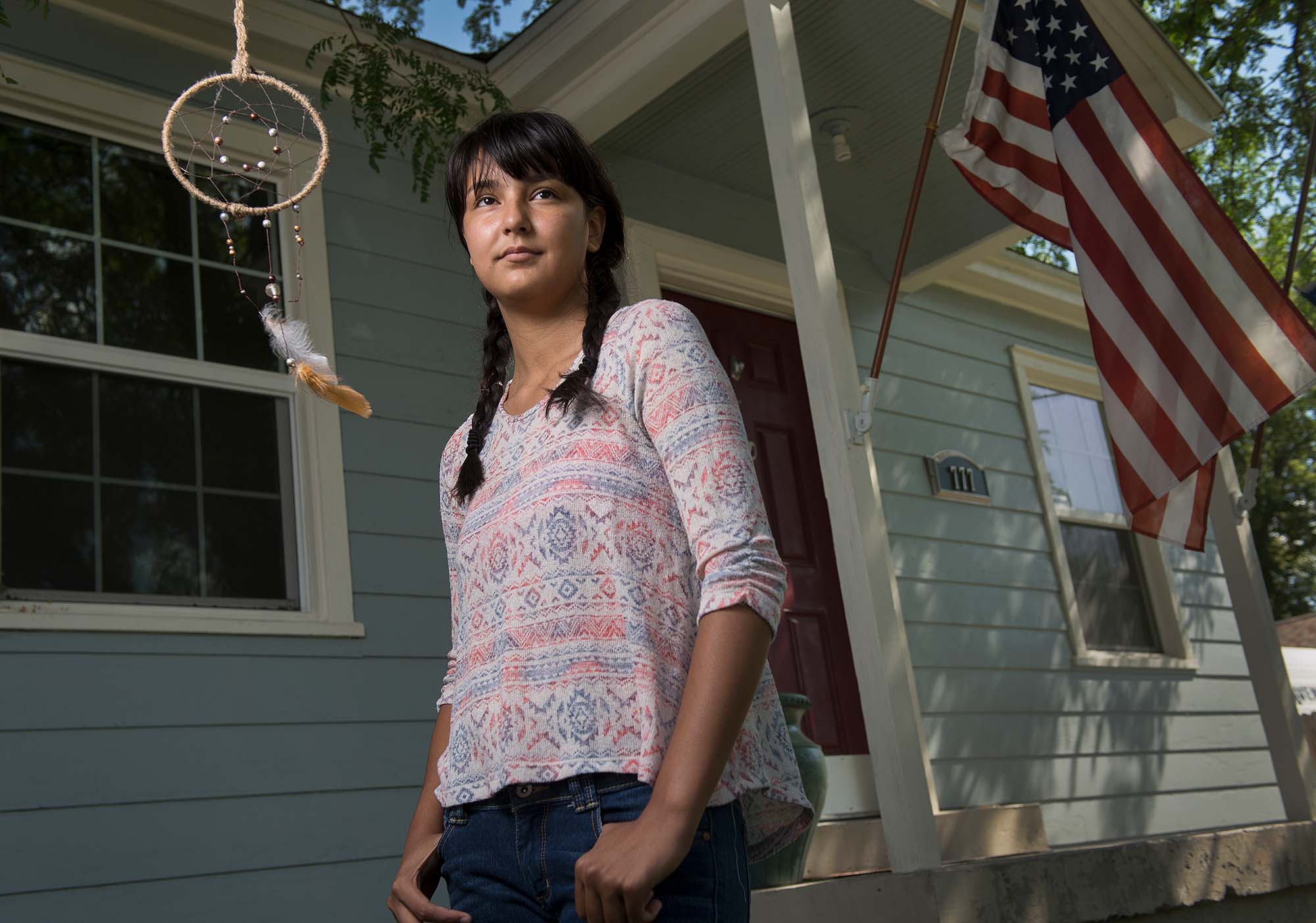Story and data analysis by Jill Castellano. Portraits by Leah Hogsten

Erinn Nicol grew up learning the traditional dances, beading techniques and dishes of the Ute Tribe. She tanned hides on visits to her great-grandfather on the Ute reservation. When she was in elementary school, her family started gathering paperwork to enroll her in the tribe officially, and she joined the Nebo School District’s Title VI program — a longtime federal initiative designed to help American Indian children succeed in school.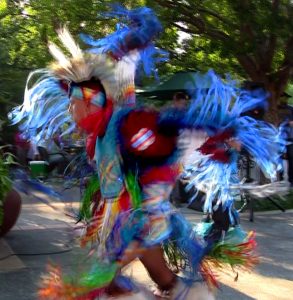
She walked away from it all in high school after the Ute Tribe denied her application, saying she didn’t have enough Ute blood.
“I just kind of lost a part of myself,” said Nicol, now a sophomore at Utah Valley University. “I just lost my passion for dancing. I hung my moccasins up and I didn’t touch them again.”
Nicol is one of Utah’s many American Indian students who feel isolated as they struggle to fit in — in their culture, school and the world at large. The result is poor educational outcomes for native students, including a high school graduation rate of 67 percent.
About 27 percent of Utah’s American Indian students are chronically absent from school — higher than any other racial group in Utah and higher than the national average of 21 percent for American Indians, according to new data from the U.S. Department of Education analyzed by The Salt Lake Tribune.
Tracking chronic absenteeism — missing 15 or more school days in a year — is perhaps more crucial than looking at graduation rates, experts say. It gives educators a chance to identify struggling students and help them before they become part of the dire graduation statistics.
“If we can intervene now, if we can get them to school and address issues that are coming up, we actually might have a chance to give all students an equal opportunity to learn,” said Hedy Chang, the executive director of Attendance Works, part of the nonprofit advocacy Child and Family Policy Center.
Cheng is one of the earliest researchers of chronic absenteeism, which was recently studied on the national level for the first time by the Department of Education. The findings were released in June.
“This is an actual data point that can change educational outcomes,” Cheng said.
Title VI — formerly Title VII — was designed to do just that, by providing American Indian students with academic help, cultural lessons and mentoring to put them on track for graduation and successful futures.
But under the law, local Title VI programs receive federal funding only for the students who’ve filled out what’s called a 506 form, which requires native students or their parents or grandparents to be tribally enrolled. Thousands of youths like Nicol aren’t eligible to fill it out — even those who were raised with native traditions, identify as native and experience the same struggles as those with full tribal recognition.
“That was very strategic of the U.S. government to put in that requirement,” said Eileen Quintana, Title VI coordinator for the Nebo School District in Utah County. “Do you realize we are the only racial group that has to prove who they are? I mean, what the hell! We don’t ask black people or Mexicans. We don’t ask white people who are Dutch or Russian to prove who they are. The U.S. government, they knew we would intermarry, and they knew within a few generations they would no longer be responsible.”
![]()
‘I feel native’
Every American Indian tribe, including the five based in Utah, has a “blood quantum” requirement — how much of a person’s lineage must be traced to the tribe to enroll. Some allow people to enroll with as low as 1/32 tribal blood. The Ute Tribe has the highest blood quantum in the nation: 5/8.
Since American Indians are more likely to marry outside their race than any other racial group, according to the Pew Research Center, as time goes on there are fewer full-blooded natives.
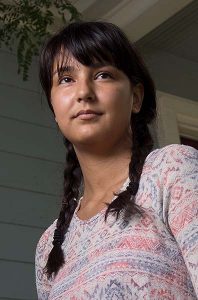
Kaylee Michaelson
“Growing up, I was asked if I was adopted a lot,” said Kaylee Michaelson, a freshman at the University of Utah.
She has dark skin and brown eyes. But her father, a single parent of three children, is Danish, with light skin, blond hair and blue eyes. Her two older siblings have dark blond hair, light skin and hazel eyes.
When she was 9 years old, Michaelson learned from an estranged relative that her mom’s side of the family was Cherokee. She spent years doing genealogy research, tracking down her American Indian heritage on Ancestry.com and learning tribal traditions, while sending messages to the Cherokee tribe asking if she could enroll. She came to see herself as Cherokee and started checking the “American Indian/Alaska Native” box when asked for her race.
When she was 17, the tribe told her she didn’t have enough proof of her Cherokee heritage to enroll.
“If you’ve ever heard the term ‘mudblood’ in Harry Potter, this kind of reminds me of that,” said Michaelson. “It makes me feel dirty blooded. I can’t be recognized as Native American even though I look native, I feel native.”
Michaelson went to elementary and junior high in the Granite School District, which has the most self-identified native students in the Salt Lake Valley — 1,232 last year. Though self-reported information can contain errors, it’s the best way to measure how many students consider themselves American Indian.
The district’s Title VI program received $145,500 in federal funding for 805 certified students last year, about $180 per student, but helped hundreds more: natives like Michaelson who couldn’t prove their heritage, and natives who refused to fill out the 506 form.
![]()
![]()
Understanding the challenges
In 1879, an industrial school founded in Carlisle Barracks, Pa., became a model for how the U.S. education system should treat American Indian students. As the Carlisle School’s founder put it: “Kill the Indian, and save the man.”
The U.S. had pledged to educate American Indian youth as a way to make up for the lost lands and untold harm the U.S. had inflicted on the native populations. For many, it seemed just a further attempt to dehumanize American Indians and systematically strip away tribal culture. Thousands of native children from around the country were torn from their families and sent to boarding schools, where they were forced to drop their Indian names, stop speaking native languages and cut off their long hair.
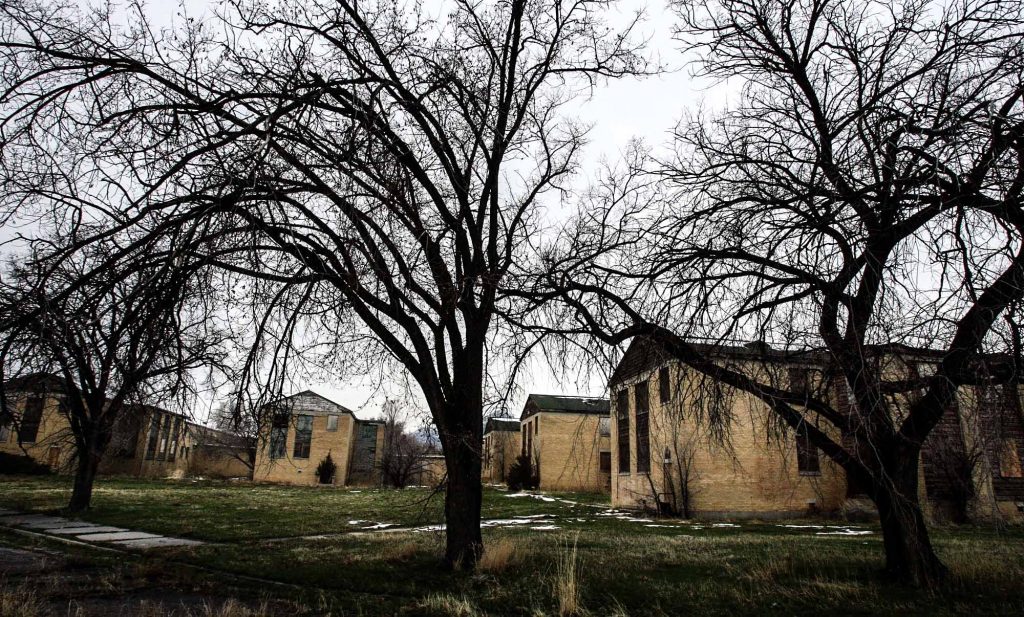
Remains of the Intermountain Indian School in Brigham City, photographed in 2010.
Steve Griffin/The Salt Lake Tribune
Many of today’s American Indian parents and grandparents remember the boarding school system and maintain a deep mistrust of American educational institutions. So when asked to fill out a 506 form for their child, sometimes the answer is no.
“It’s very, very degrading to our people to be asked to bring out your tribal enrollment form,” said Quintana, the Nebo Title VI coordinator. “In essence, you’re pedigree. You’re like animals, like dogs — are you papered? I’ll tell you one thing, that is a systematic racism tactic if I’ve ever heard of one.”
But the Title VI programs desperately need the funding that hinges on the form — so coordinators in the 20 Utah school districts with Title VI programs spend much of their time advocating for the paperwork with families.
“If they understood [that] once you are certified as Native American, it opens doors for funding grants and scholarships and college, the parents are much more willing to pursue it,” said Karen Sterling, director of the student advocacy office for the Canyons School District. “But we have to explain that we’re not just trying to be nosy.”
How many American Indian students are certified?

American Indian education programs receive funding only for the students who submit a form proving tribal heritage to the federal government.
Source: Data provided by administrators in each county school district for the 2015-2016 school year
More than a thousand students in her district identify as American Indian, but just 233 were “certified” last year by filling out a 506 form, amounting to $45,899 of federal funding.
Davina Spotted Elk, the Title VI coordinator for the Salt Lake School District, tries to visit every school throughout the year, making the program’s resources known to native students. She also conducts home visits with native families whose students are struggling.
“There are times when I didn’t count the hours,” Spotted Elk said. “They were not considered working hours, but I still had to go meet with the community just because I know how important it is to make sure that native students in the district are being supported.”
More than 3,000 of the 516,000 students in her district self-identified as American Indian last year, but just 361 were certified, bringing $44,048 to Spotted Elk’s Title VI program.
Her program relies on that funding to cover activities and courses for all American Indian students who participate, whether or not they’ve been certified, as well as pay for textbooks, calculators and other necessities for native students who can’t afford them. The rest is split between part-time salaries for Spotted Elk and a mentor who works with native grade-schoolers.
Title VI coordinators from across the valley have a laundry list of activities they’d start if they had more funding — among them, establishing American Indian after-school clubs and taking kids on field trips to heritage sites. Spotted Elk would like to spend more time with elementary school students to get them engaged in Title VI at a young age.
Canyons’ Sterling hopes that Title VI coordinators can someday focus on running their programs instead of gathering the paperwork that ensures their existence — whether that means a boost from state funding or looser federal requirements.
“If we can keep bringing this discussion to the forefront,” she said, “if we can have legislators who understand the challenges involved, maybe we’ll be able to secure funding in a generalized way to help these kids.”
Tennessee Sen. Lamar Alexander introduced the Every Student Succeeds Act into the Senate last year, which kept the same Title VI funding restrictions as the previous law that had been in place for 50 years. He declined an interview, but a representative said he had not considered changing those aspects of the law.
Sen. Orrin Hatch, R-Utah, who sits on the education committee, said in a statement that he believes Title VI continues to benefit American Indian students and is open to hearing feedback.
“I’ve spent considerable time this summer with our some of our tribal communities discussing their concerns,” he said in the statement, “and I look forward to continuing to advocate for them in Washington.”

![]()
‘Part of something’
In some Utah school districts, the only American Indian educators are those who work for the Title VI program. Utah has 41 native students for every native educator, compared with 15 white students for every white educator.
Student-to-Teacher Ratios in Utah Vary by Race
Native
White
Source: Calculated from Utah State Board of Education data for the 2015-2016 school year
Spotted Elk said students and families come to rely on the familiar faces of Title VI coordinators, who understand their culture and the challenges of being American Indian in a predominantly white setting like the Salt Lake Valley.
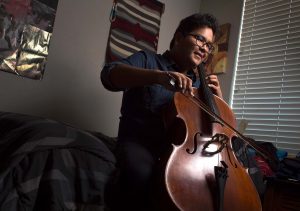
“I love learning new things, challenging myself,” said Derek Curtis, whose ambition is to return to high school as a music teacher. The half Navajo Native American, 4.0-gpa student also dreams of attending Julliard School of Music in the hopes of becoming a Hollywood film composer.
In his voice:
Quintana, in the Nebo district, is one of the few Title VI coordinators in Utah who works full time. She faces the same challenges securing federal funding as other coordinators, but she circumvents the problem by getting money directly from her school district.
Quintana relied solely on federal grants when she started running the program 20 years ago. When native parents in the Nebo district heard about her situation, they went to district leaders and insisted Quintana be hired full-time.
“We presented how much work she does for us, which was way beyond the hours she was being paid for,” said Dalynn Fregoso, a parent of five native students who attended school in the district.
Within a year, Quintana had a full-time job. As the program expanded with additional funding, graduation rates rose and after-school activities for native students became commonplace.
Fregoso’s family moved to South Dakota when her kids were young, only to find that the school had no specialized support for native students. They moved back.
“You feel like a bigger part of something here,” Fregoso said. “We live out here, but we don’t have family out here. This feels like an extension of the family.”

Although she was an honors student, counselors at Jennifer Leo’s high school tried to convince her to transfer to the alternative school in the district. Today, in her role as the Title VII Indian Education coordinator for the Murray School District, she tailors her day around their needs and learning styles. “They just need time and attention,” she said, “someone who understands. It’s a huge emotional commitment.”
In her voice:
It’s that feeling that drives people like Jennifer Leo, Title VI coordinator for the Murray School District, who said she has received almost no support from her district.
Murray’s Title VI program secured $17,582 in federal funding last year to support 97 certified students and pay for the salaries of five people: Leo, an assistant coordinator, a Navajo language instructor and elementary and high school mentors. Another 86 self-identified native students were enrolled last year.
Though she’s paid part time, Leo said her program has increased the American Indian graduation rate. When she started seven years ago, the rate was 40 percent; in 2014, 100 percent of American Indian students graduated.
“It’s impossible to do what we’ve done working part time,” Leo said. “It’s student wages. There’s no benefits, no security.”
Earlier this year, she wrote to supervisors with the hope of securing a full-time position. She said she never received a response.
“We get the impression they’re not interested,” said Leo, who has a second job teaching at Salt Lake Community College.
She hopes that if she continues supporting her native students, she will someday get support of her own. If not, she’ll just keep working.
“It’s not a job, we don’t look at it that way,” she said. “It’s a program, and we all believe in it.”
The Title VI program was a way for Nicol, the student rejected for enrollment in the Ute Tribe, to begin feeling connected to her heritage again. When she was a freshman in college, she returned to her former program in Nebo to tutor other young native students.
“Going back kind of helped me realize, I’ve been doing this since I was young, why should I change how I view myself now?” she said. “If you are Native American, you are 100 percent Native American. Not just a part of you.”
![]()
Self-esteem program at the Urban Indian Center

Photos by Francisco Kjolseth/The Salt Lake Tribune
Additional credits: Daniella Birch (graphics) and Rich Kane (video)
Audio interviews recorded at KCPW by Emily Means

